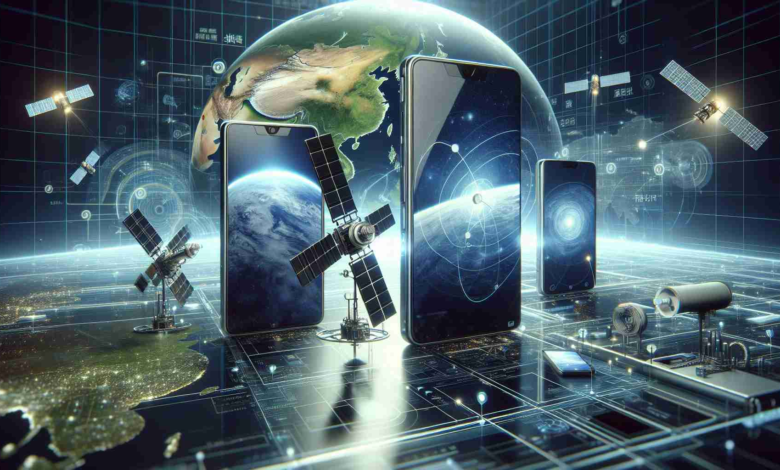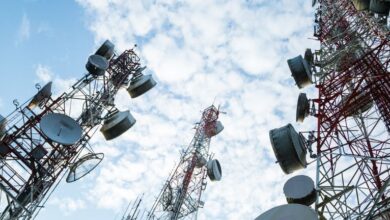China’s Telecommunication Breakthrough with Satellite-Enabled Smartphones

In an era where communication is critical, China has taken a bold step towards ensuring that everyone, anywhere, can stay connected. The development of China’s Tiantong satellite has revolutionized the way the world approaches telecommunications. Presently, smartphones have the capability to directly link with satellites, bypassing the need for grounded network infrastructures. This leap forward is especially significant for remote areas worldwide, which until now, have been either underserved or completely out of reach.
The Tiantong satellite promises to disrupt the traditional telecommunications model, placing greater tools into the hands of individuals and expanding global communication networks. This innovation could prove game-changing for managing emergencies and fostering connectivity in underdeveloped regions.
China’s progress in satellite technology is poised to play a pivotal role in the global telecommunication scene and is a clear demonstration of the country’s growing influence in this cutting-edge sector. With the satellite communication market expected to skyrocket to $40.7 billion by 2025, this movement towards better, more widespread communication capabilities speaks to the recognition of the vital need for universal connectivity.
The transition to satellite-based smartphone communication enables not only progression in social and economic collaborations across borders but also a formidable platform for managing crises and natural disasters efficiently. Given the memory of the communication failures during the 2008 Sichuan earthquake, China’s commitment to enhancing emergency connectivity with satellites is both strategic and humanitarian in scope.
Expert market research firms emphasize the importance of understanding the impact and the pathway forward, considering the hurdles such as space debris, spectrum regulations, and cybersecurity. Sustaining satellite communication growth and leveraging it for positive change globally will require concerted effort and international policy alignment.
China’s Tiantong satellite paves new avenues for connectivity, bridging divides, and empowering communication in the farthest corners of the globe—ushering in not just a new chapter in technology, but also in human connectivity.
China’s Leap into Satellite Telecommunications
Emergence of Tiantong and Industry Implications
The advent of China’s Tiantong satellite represents a significant shift in global telecommunications. This technology enables smartphones to directly interact with satellites, thus bypassing traditional ground-based infrastructure. This holds immense benefits for remote locations, improving communication where terrestrial networks are lacking or nonexistent. The inclusion of satellite capabilities in smartphones is a transformative development ensuring all populations can access reliable communication, especially vital in areas prone to natural disasters or those that lack basic communication infrastructure.
China’s contributions signal its rising prominence in the competitive sphere of satellite technology, an industry projected to flourish exponentially. By 2025, the satellite communication market could reach a staggering $40.7 billion, as more businesses and consumers recognize the necessity of comprehensive, boundary-spanning connectivity.
The Global Impact of Satellite Connectivity
The robust features of satellite smartphones facilitate not only social and economic interactions but also a reliable network for crisis management and disaster relief efforts. In empowering such connections, Tiantong satellites stand as a testament to China’s strategy to blend humanistic concerns with technological aspirations, drawing lessons from the past, such as the 2008 Sichuan earthquake’s communication challenges.
Challenges and Considerations
However, the sector must navigate a complex array of obstacles that include mitigating space debris, managing spectrum allocation, and securing networks against cyber threats. As the satellite market continues to ascend, stakeholders across the board must engage in careful planning and collaboration, with regulation and international cooperation playing a crucial role in maintaining safe and efficient global communication networks.
Conclusion
The development and deployment of the Tiantong satellite by China marks a significant milestone in communication technology, with the potential to bridge the digital divide and provide universal access to information and emergency services. This leap in satellite communications underscores not only technological advancement but a commitment to fostering human connections around the world. For further information on the global satellite communication industry and market trends, reputable sources such as the International Telecommunication Union can be visited by following this link.

Natalia Toczkowska is a notable figure in digital health technology, recognized for her contributions in advancing telemedicine and healthcare apps. Her work focuses on developing innovative solutions to improve patient care and accessibility through technology. Toczkowska’s research and development in creating user-friendly, secure digital platforms have been instrumental in enhancing the effectiveness of remote medical consultations and patient monitoring. Her dedication to integrating technology in healthcare has not only improved patient outcomes but also streamlined healthcare processes, making her a key influencer in the field of digital health innovation.



